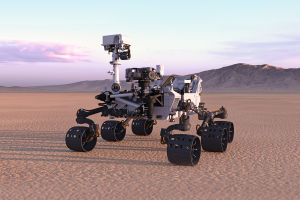
Mars has been a focal point of human curiosity for centuries. From early astronomers peering through telescopes to today’s robotic rovers exploring the planet’s surface, humanity has always been drawn to the Red Planet.
But why is this fascination so persistent? Mars represents both a challenge and a promise, a place where we could uncover the mysteries of our solar system and perhaps, one day, even build a future habitat.
This article takes you on a journey through the endless quest to explore Mars, a mission that shows no signs of slowing down.
The Role of Robotic Missions
Robotic missions to Mars have been at the heart of exploration for over 50 years. The first successful Mars mission, Mariner 4, flew by the planet in 1965 and transmitted the first images of its surface. Since then, spacecraft like Viking, Pathfinder, and Curiosity have all contributed valuable insights into Mars’ geology, atmosphere, and potential for past life. Today, rovers like Perseverance and Ingenuity are actively exploring Mars, providing data that could revolutionize our understanding of the planet.
These robotic explorers have not only helped us learn more about Mars’ history but also prepared the way for future human exploration. Each mission brings new technology, improved instruments, and more detailed findings, ensuring that the exploration of Mars continues to evolve and expand.
Advances in Space Technology Fueling Mars Missions
The technological advancements in space exploration are making it increasingly feasible to explore Mars in ways we never thought possible. With innovations in propulsion systems, space habitats, and even AI-powered robots, NASA and private companies like SpaceX are pushing the boundaries of what we can achieve. For example, the Mars Helicopter, Ingenuity, which was sent with the Perseverance rover, marked the first powered flight on another planet, opening the door to new exploration methods.
In addition, the upcoming Mars missions, such as NASA’s Artemis program, aim to build on past successes by developing sustainable exploration techniques. These advancements will enable not just short-term visits to Mars but long-term exploration and even potential human settlement.
The Goal of Human Exploration
The dream of sending humans to Mars has been a driving force behind many missions. NASA’s goal of landing astronauts on Mars by the 2030s remains ambitious, but it is becoming more achievable every day. Advances in life support systems, radiation protection, and spacecraft design are critical to making human exploration of Mars a reality.
We’re also seeing private sector involvement in this mission, with SpaceX aiming to send the first humans to Mars as early as the mid-2020s. Elon Musk’s vision of creating a self-sustaining colony on Mars is one that captures the imagination of people around the world. These efforts are pushing space agencies to innovate and collaborate, accelerating the timeline for human exploration of the Red Planet.
Exploring the Possibilities of Life on Mars
One of the most exciting aspects of Mars exploration is the possibility of past or even present life. NASA’s Perseverance rover is actively searching for signs of ancient microbial life, while the Ingenuity helicopter is helping to scout new areas for future exploration. Scientists believe that Mars once had liquid water on its surface, which could have created conditions suitable for life.
In addition, the study of Martian soil, atmosphere, and minerals could reveal whether Mars is still capable of supporting microbial life today. If life is discovered on Mars, it would have profound implications for understanding our place in the universe and the potential for life elsewhere.
Why We Keep Going: The Enduring Appeal of Mars
The question remains: why do we keep exploring Mars? The answers are numerous. Mars holds clues to the history of our solar system and the potential for life beyond Earth. It offers a unique opportunity for humanity to push the limits of science and technology while working toward the long-term goal of becoming an interplanetary species. The Red Planet represents the next step in the great adventure of space exploration.
As we continue to explore Mars, each mission uncovers more about its past, present, and future. The quest is not only about science and discovery but also about the spirit of exploration itself—an unyielding drive to understand the cosmos and our place within it.
The Journey Never Ends
Mars exploration is far from over. With each new mission, we take one step closer to understanding the mysteries of the Red Planet and, perhaps one day, establishing a human presence there. The drive to explore Mars is as strong as ever, and as technology advances, the possibilities seem endless. So, while we may not have all the answers yet, one thing is certain: the exploration of Mars will never stop.
What do you think, Lykkers? Do you believe humans will live on Mars one day? Drop your thoughts in the comments below!
The End of Exploration on Mars? | National Geographic
Video by National Geographic


